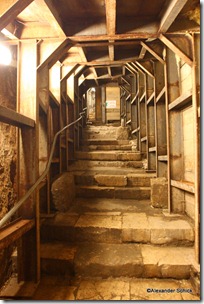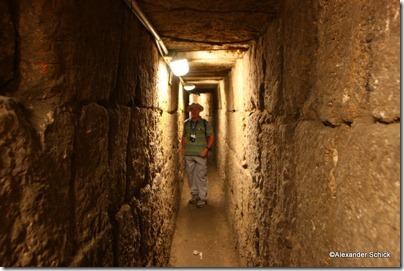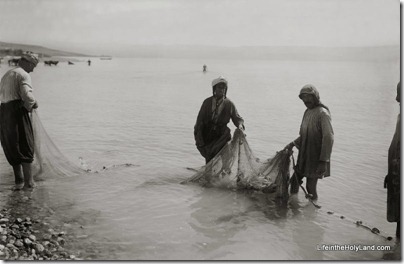Archaeologist Eli Shukrun gave the Jerusalem Post a tour of the recently completed excavations of the drainage channel that runs from the area of the Western Wall to the Pool of Siloam. The article includes details that have not been previously reported. From the Jerusalem Post:
The channel was an early drainage system for the city of Jerusalem, which emptied into the Shiloah Pools on the southern end, in today’s Silwan neighborhood. Archeologists believe that the other side of the channel is near Nablus gate [Damascus Gate]. The channel was extensively excavated more than 100 years ago by British explorer Charles Warren in 1867 and archeologists Bliss and Dickey in the 1890s. The southern section of the channel has been open to the public for many years, but this was the first time that it was discovered that it is a continuous channel, about 600 meters long altogether.
[…]
Shukron led the Post on a tour of the channel following the announcement on Tuesday afternoon. The channel is about 1/3 of a meter wide and ranges in height from one to two meters, and is between 15 to 20 meters underground. The channel’s clearing also allowed archeologists to see the lower stones of the Kotel that are currently underground, though Shukron dismissed the Kotel stones as the least exciting part of the project.
“You know the Kotel already; that’s already been overdone,” he said, hurrying past the bottom of the Kotel to point out an underground mikve (ritual bath) and an ancient manhole.
[…]
Shukron also pointed out the remnants of previous explorations, including old wires and writing on the wall in French. He stressed that the channel did not go anywhere near the Temple Mount or the mosques, in contradiction to some claims. The channel follows the Tyropoeon Valley, which is the lowest area in ancient Jerusalem. “That’s why I can’t go up to the Temple Mount, because the Temple Mount is high. There’s no way that a drainage pipe could reach there,” Shukron explained.
The full story includes a photo of the ancient manhole. The excavations are also reported by Arutz-7 and Ynetnews.
HT: Joe Lauer


